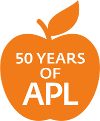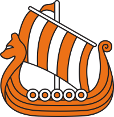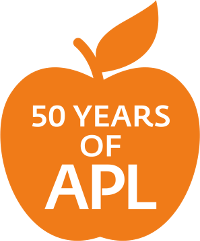
50 Years of APL
2016 is an important year for APL as it's the 50th anniversary of the )SAVE of the first CLEANSPACE – the birthdate of APL as an interactive tool. While it's important that we continue to develop the language to take advantage of everything that modern technology can offer, it's also worth celebrating the achievement; 50 years old and still in demand is a milestone that not many other programming languages will reach.
To commemorate APL's golden anniversary, we're collecting materials related to half a century of APL. If you have a photograph/paper that we can publish, a reference that ought to be included or a good story from the first 50 years, please email apl50@dyalog.com; we'll collect the stories and photographs on this page for you to enjoy during the next 50 years!
from http://www.jsoftware.com/papers/APLQA.htm#APL_birthday:
)load 1 cleanspace SAVED 1966-11-27 15.53.59 (GMT-7)
In The Beginning...
Despite a lack of social media and digital recordings, some early material still exists to remind us how things used to be done.
-

APL A programming language, lecture 14
c1968 lecture by Al Rose, one of the pioneers of APL (and mentioned in APL Blossom Time!). Taken from low band A-Format video tape – the quality of the recording is poor but the audio is good and the sound of the golfball is hypnotic.
length: 41 mins 21 secs
-

The Origins of APL – 1974
Talkshow-style interview with the original developers of APL, including Phil Abrams, Larry Breed, Adin Falkoff, Ken Iverson and Roger Moore.
length: 55 mins 43 secs
-

APL demonstration 1975
1975 live demonstration of APL by Professor Bob Spence, Imperial College London.
length: 27 mins 59 secs
-

SCAMP (Scientific Center APL Machine Portable) – The 1st IBM personal computer
Two IBM labs in California's Silicon Valley collaborated in 1973 to create a portable personal computer called SCAMP which helped change all of our lives. Narrated by Paul Friedl, the inventor of SCAMP.
length: 14 mins 37 secs (APL is highlighted at 8 mins 48 secs)
APL Blossom Time – listen to live or studio recordings of this song as .mp3 and .wav files and sing along with the lyrics!
The APL Programming Language Source Code – a brief history of APL, introduction to its notation and biography of Ken Iverson from California's Computer History Museum (includes downloadable APL\360 source code!).
History of APL – California's Computer History Museum's Software Preservation Group project to locate source code, design documents, tech notes, books, recorded talks and other materials concerning early APL implementations such as APL\360.
Ken Iverson, APL and J – a collection of Ken Iverson's papers, manuals, software, and other items.
The Socio-Technical Beginnings of APL – Eugene McDonnell gives some of the history of implementations of APL, concentrating on the system aspects and paying special attention to the time-sharing scheduling strategy.
Early APL manuals – a repository of downloadable PDFs of IBM documentation, designs, reference cards and newsletters from Paul Berry's APL 1130 Primer (1968) to an introduction to APL 2 (1985).
 Ken Iverson
Ken Iverson  APL
APL  1979 Turing Award
1979 Turing Award
Half a Century of Evolution
J software's online collection of APL Quotations and Anecdotes spans not only the entire history or APL but also all the major dramatis personæ involved over the last half century.
Also in this collection are four papers of particular interest (these papers and other papers authored by Ken Iverson can be found in the ACM Digital Library):
- Ken Iverson's 1966 work on Conventions Governing Order of Evaluation, which first appeared as Appendix A of K.E. Iverson, Elementary Functions: An Algorithmic Treatment, Science Research Associates, 1966
- Ken Iverson and Adin Falkoff's 1973 paper on The Design of APL, which first appeared in the IBM Journal of Research and Development, Volume 17, Number 4, July 1973
- Ken Iverson and Adin Falkoff's 1978 paper on The Evolution of APL, which first appeared in the ACM SIGPLAN Notices 13, 1978-08.
- Ken Iverson's 1980 paper on Notation as a Tool of Thought, which first appeared in the Communications of the ACM, Volume 23, Number 8, 1980-08
![]() APL in the Nordic Countries by Gitte Christensen
APL in the Nordic Countries by Gitte Christensen
An introduction to the early years of APL and its use in the Nordic countries. The different applications of APL are described in the context of changing conditions through the last 50 years. The evolution of APL is outlined and the current state established. In summary this is a story of computing driven by end-users.
![]() Dyalog APL – A Personal History by Pete Donnelly
Dyalog APL – A Personal History by Pete Donnelly
An eye-witness chronicle of the birth and evolution of Dyalog, from the formation of Dyadic Systems in 1976 until Morten Kromberg and Gitte Christensen took control in 2005.
![]() Dyalog at 25 a Vector supplement celebrating the first 25 years of Dyalog Ltd and Dyalog (September 2008).
Dyalog at 25 a Vector supplement celebrating the first 25 years of Dyalog Ltd and Dyalog (September 2008).
![]() Forgotten APL Influences by Jon McGrew
Forgotten APL Influences by Jon McGrew
A retrospective of APL's influence on today's technology (January 2016).
In honour and celebration of the 50th anniversary, Roger Hui offers A History of APL in 50 Functions and Some Exercises in APL Language Design
What Next for APL?
Today, commercial and open-source versions of APL interpreters run across multiple operating systems and can integrate with many modern third-party products; in addition, the arrays at the core of APL mean that it is well suited to parallel computing. APL is used across a diverse range of disciplines, especially when time-to-market is important or when systems change frequently and rapidly. Applications include trading systems, genotyping and expression profiling, modelling for insurance purposes, analysis of big data and the co-ordination of multiple individual healthcare systems across an entire country.
People in their 20s have always played a key role in the development of APL. In the 1960s, it was a group of graduate students from Stanford who played key roles in the implementation. In the 1970s, it was people like Eric Iverson, Bob Bernecky, Jim Brown, Bob Smith, Jim Ryan, Geoff Streeter and John Scholes. In the 1980s, it was Arthur Whitney and Roger Hui. Attracting bright new people to APL is something that can only be good for the language. One way in which students are introduced to APL is through the annual student competition; the 8th annual competition is running at the moment and has received 4,236 registrations so far (as of 5 August 2016).
-

Pragmatic Functional Programming Using Dyalog APL

As part of the Talks at Google programme, Morten Kromberg shows how Dyalog is a modern, multi-paradigm programming language that supports functional, object-oriented and imperative programming based on an APL language kernel.
length: 77 mins 22 secs
APL is making its presence felt on social media and in chatrooms. Follow/contribute to the discussions, keep up with the latest news or astonish the uninitiated in any of the following (non-vendor-specific) channels:
50th Anniversary Events and Celebrations in 2016


Dyalog and the British APL Association worked together to make Wednesday 12 October and Thursday 13 October 2016 a celebration of all things APL. This celebration was part of the Dyalog '16 user meeting in Glasgow but was not just for Dyalog vendors and developers – all flavours of APL (and close relatives) were welcome. Material from the presentations (including slides and videos) can be viewed at and downloaded from the Dyalog '16 web page.
Other Celebrations
Photos from APL Germany's celebration in Böblingen, Germany


